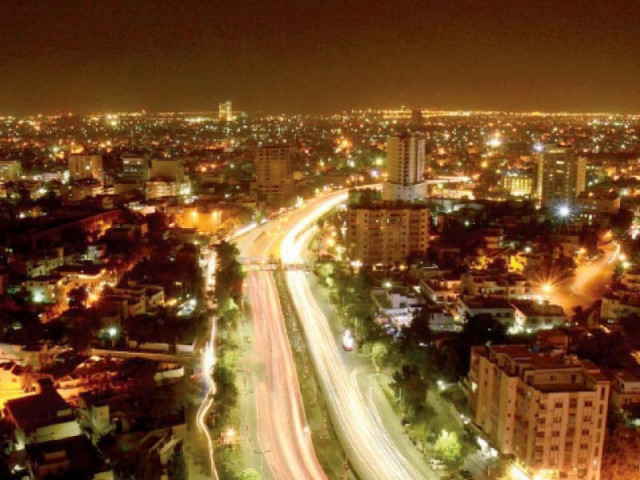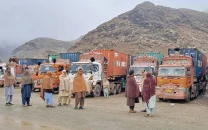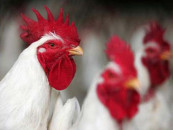Creditors must stop subsidising rot
Despite IMF programmes, every socio-economic parameter is virtually in red

Pakistan is again going through a deep economic crisis and like always we had no other choice except to throw ourselves at the mercy of the IMF. This article is an attempt at a brief analysis of what particularly ails our economy.
Even a cursory review of the increase in imports over time suffices to tell us about our muddled priorities and causes of current crisis. They have increased from $0.5 billion in 1960 to $80 billion in 2022.
Energy, food items, iron and steel constitute 40% of the aggregate imports, which says it all. We claim to be an agricultural country, but routinely import wheat, sugar, vegetables and edible oil.
Similarly, we have miserably failed in effectively tapping the indigenous energy. As to steel, PSM, commissioned in 1981, is closed since 2015. Also, Tuwairqi Steel, established through FDI of $330 million, is shut over frivolous issues since 2013.
Historically, in the first four decades, we were able drag on at the behest of the global divide between the capitalist and the socialist blocs. Thus, by 1990 the US had given to us $40 billion in aid alone.
We even had the audacity to frequently throw tantrums, eg calling the offered aid of $400 million in 1980 to be peanuts and demanding its revision. As it suited the US interest till 1990, they kept on pumping dollars into Pakistan.
However, as soon as the Russians evacuated Afghanistan and the socialist bloc started crumbling, they closed the dollars’ valve by invoking the Pressler Amendment, which was actually in place since 1985.
Resultantly, US aid to Pakistan from 1990 onwards till 2000 remained hardly $0.6 billion. However, instead of attempting to stand on our own feet, we anxiously started looking for new sponsors and found them in the form of Gulf states. Some 50,000 bpd of free oil for two years when we conducted nuclear tests in 1998 is an exhibit of the same. The dependence has only grown with time and taken new dimensions.
In the given backdrop, 9/11 ironically served as a windfall for us. The US needed us, therefore, the dollars started flowing again. Thus, around $30 billion was provided from 2001 to 2010. However, the relationship again took a bad turn in 2011 since the killing of Osama bin Laden in Pakistan by the Americans in a night raid.
The incident was followed in November the same year by an attack of Nato forces on a Pakistani border check-post at Salala, which resulted in 24 Pakistani soldiers losing their lives. Pakistan retaliated by closing the borders for Nato supplies for an extended period.
The drone bombings, which started in 2004, peaked in 2010, which further affected the relationship. In the given backdrop, the Americans again closed the dollar valve.
But, when the aid stopped,learning nothing, we went on a borrowing spree. Therefore, while our public debt till 1990 stood at Rs711 billion, it increased by 5.1 times to Rs3,684 billion by 2001.
However, post 9/11, due to the resumption of US aid, the pace of increment remained considerably low till 2010, ie 2.4 times by rising to Rs9,006 billion only.
In the next 10 years, with the US being unhappy again, it rose to Rs36,399 billion, ie by four times. It currently stands at Rs62.46 trillion (including liabilities), a substantial increase from Rs50.496 trillion in September 2021 and a reflection of acceleration of the meltdown which started more than a decade ago.
Another critical benchmark cannot be ignored, ie while the external debt in 1990 stood at Rs330 billion and domestic at Rs381 billion, they correspondingly increased to Rs13,601 billion and Rs23,283 billion by 2020.
This primarily reflects that when the Americans dumped us, taking the lead, other possible donors and creditors also closed their fists. Being habitual borrowers, we frantically exercised internal borrowing to fill up the associated fiscal void instead of controlling our expenses and trying to create wealth.
Marshal plan
A "Friends of Democratic Pakiistan" group was launched in September 2008. As part of the said initiative, we had the audacity to even request for a “Marshall Plan” providing $30 billion in aid.
As to the original Marshal Plan under which the total US aid dispensed was $13.2 billion, it proved sufficient to restore the economies of 16 European countries including West Germany, France and the UK.
Upon its expiry in 1952, economic growth in the said countries surpassed pre-war levels. Other examples of judicious use of such aid are Taiwan and South Korea.
What is to be done
Despite so many IMF programmes and the lavish supply of credits and aid, our every socio-economic parameter is virtually in the red.
Simultaneously, any model involving proactive participation and planning and execution on our part, such as CPEC, has so fair failed to take roots. Thus, our creditors and donors have so far mostly subsidised the rot and incompetence of the ruling elite.
Therefore; a) Creditors and donors may start linking up all of their programmes for Pakistan with measurable targets for structural reforms. b) We have more than 200 PSEs. In order to generate immediate cash, equities in them, starting with the energy sector (E&P, gas utilities and DISCOs), may be negotiated on a G-to-G basis with PSEs in Russia, China, Singapore, Norway and GCC with at least three board positions against each such transaction.
The professional new directors would prove to be a whiff of fresh air for the PSEs, currently gasping under their abject bureaucratic strangle and resultant non-professional boards.
Also, this entire exercise needs to be managed by a dedicated team of world-class professionals under the leadership of a professional. It would be doomed from day one if left to some secretary sahib.
It is high time to implement complete separation of the bureaucracy from any institution involved in planning and execution. c) 60% of households in the rural areas of Pakistan are completely landless. Getting rid of feudalism lock stock and barrel and cooperative farming complemented by a massive dose of technology and R&D in agriculture are imperative.
As to the implementation of the above somewhat radical remedies, our ruling elited are, of course, devoid of the required will and capacity. However, the current angst among the masses, as a result of the given acute crisis, surely provides sufficient ground for a progressive national democratic vehicle to emerge and play that historic role.
THE WRITER IS A PETROLEUM ENGINEER AND AN OIL AND GAS MANAGEMENT PROFESSIONAL



















COMMENTS
Comments are moderated and generally will be posted if they are on-topic and not abusive.
For more information, please see our Comments FAQ